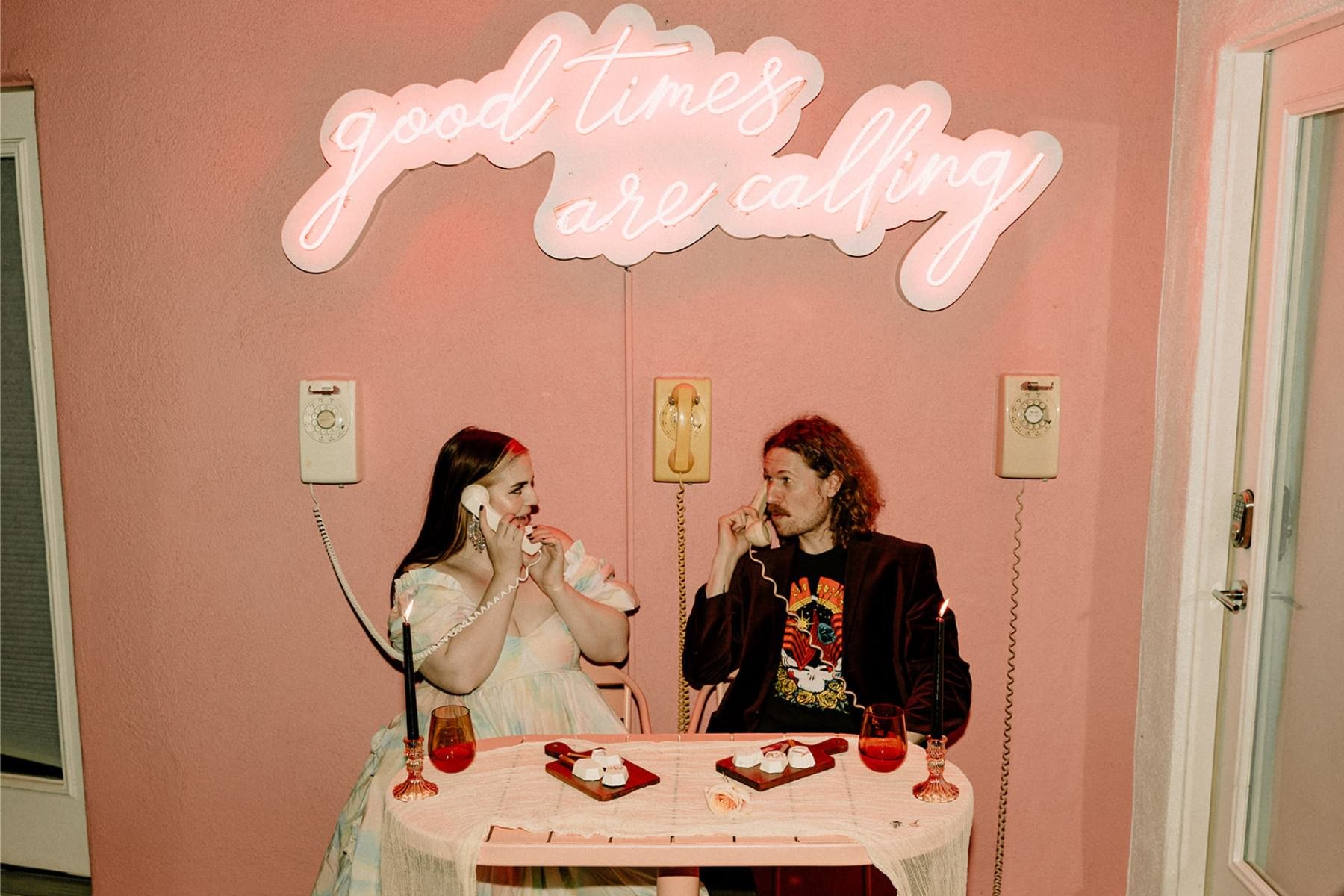Wedding Planning 101: Where to Start and What to Do First
Congratulations, You're engaged!
You've popped the champagne, facetimed friends and family with the news, and gushed all over social media about the love of your freaking' life. Once those happy endorphins settle, you realize you now have to plan when and what your wedding or elopement will be. Suddenly, you're at a loss for where to start; what now?! 😱 You've never gotten married before(or maybe not in the same decade), and now you're expected to orchestrate one of the most significant life events! Don't worry, babe; let's talk about how and where to start planning.
A quick note: As a tri-state photographer for Florida, Connecticut, and California, I will focus on wedding averages from these three states. Between the three states is a fair representation of potential costs for couples.
Figure Out Your Wedding Budget
Ah yes, everyone’s favorite topic! It's essential to start here, as it affects the rest of the planning process. First, let's discuss the averages for weddings in Florida, Connecticut, and California.
Average for all three states:
Florida: $34,000
Connecticut: $44,000
California: $41,000
While the article doesn't include a guest count, I assume this average is based on a 150-person list. Speaking of guest lists, what's the average per guest in each state?
Averages per person, per state:
Connecticut: $447
Florida: $241
California: $395
(while this data is based on a 66 guest count during the pandemic, the cost is in line with other statistics.)
Average vs. Median C of weddings:
You might be thinking to yourself, “Whoa, Phoebe, that is way too much! I could never afford the cost of the average wedding 😳!” And to that, I say you don’t have to. Remember, this is an average, not the median cost.
Whatever amount you decide to spend on your wedding does not have to follow any “set guidelines” based on an average or median “cost per couple.” What does matter is that you and your partner are in synce when it comes to costs.
Before looking into vendors,
you and your partner should have a number in your mind to keep you on track. Once you've set your budget, don't hesitate to be upfront with vendors and ask questions about their packages.
Keep in mind that almost 50% of couples go over budget with their wedding, so it's wise to have a "cost goal" and a firm number you won't go over. For example, "Our goal is to keep costs under $25,000, and our max budget is $30,000". This gives you some breathing room for unexpected expenses!
2. Decide Between Eloping, a Micro Wedding, or a Traditional Wedding
The best part about getting married in today's internet-connected world is that there is no "right way" to get married. While you might have family expectations to contend with, you will find that there is plenty of advice, support, and representation online for going off the beaten path. It's ultimately up to you and your partner to decide what's most important to you! To help clarify your options, here's some guidelines:
Elopements:
This can mean anything from going to your local courthouse to tie the knot or traveling in(or out)of the country for what's called an "adventure elopement." People often use their elopement as their chance to travel to a dream destination. Elopements are frequently just the couple, but these days a small(under 10 people in my Elopement Package) group of nearest and dearest sometimes come along for the ride!
Small Weddings:
This is a wedding that can be local or a destination and is a small, intimate gathering of less than 50 guests. Often, the day of events is like a typical wedding, but couples have a chance to host in a smaller venue, such as a restaurant, instead of a large wedding banquet hall. Small weddings are great for couples wanting a fun party with fewer costs involved.
Traditional Weddings:
This is the most well-known wedding type, with an average of 150 guests. Traditional weddings usually follow a timeline of getting ready, formal pictures, ceremony, cocktail hour, reception with dances, cake cutting, dinner, and dancing.
There is always room to start new traditions and create a unique experience for you/your guests when getting hitched, but each celebration will require a different amount of effort and/or money. Once you decide on your type of wedding, you can start on your guest list!
Personally, I offer to shoot every type of event; Find out more HERE.
3. Pick a Date & Venue
Once your guest list is figured out and you have a rough estimate of people, you're ready to start talking dates! Here are a few questions to ask each other when planning your date/venue:
Where are you/your guests most centrally located?
Do you want to travel or keep it local?
Do you have a preferred season you'd like to get married in?
What will your work/personal life allow for time off?
Once you have answered these questions, you can bring out your calendars and set a date. Selecting upwards of 3 potential days is helpful as you tour venues and inquire about their availability. If you're interested in a cost-effective option, ask about the venue's weekday/Sunday wedding pricing, as they're usually discounted. If you're getting married in the US, research national holidays that take place during the week and schedule your wedding the day before!
4. Discuss Top Priorities for Your Wedding/Elopement
Now that you have a budget for your nuptials, it's time to talk about vendor priorities. You might be surprised where you and your partner align and differ! You could both write out your top 3-5 wants and discuss your choices. Ask these questions to figure out what's best for your love story:
What would having these vendors at my wedding/elopement look like on our day?
Why do I want that experience over prioritizing other vendors?
(If you've attended other weddings) what parts of it did you really love, and what didn't you care for?
Why did your partner choose something similar or different?
Are we investing in vendors we align with, or are we doing it because of what we've been told to prioritize?
You'd be surprised how this conversation can help you realize what truly matters to you and what's expected from the outside.
5. Choose Your First Vendors Based on Your Priorities
Once you know your and your partner's main priorities, it's time to start searching for your preferred vendors. Especially if you have a specific business in mind, you'll want to reach out to them as soon as you secure a date(especially if that date is during a vendor's busy season). What if you have no idea what vendors are in your area? I suggest 1. Looking on Instagram, 2. Asking friends and family, 3. Utilizing Google search.
As a photographer, I'm going to let you in on a secret: Wedding-specific sites/blogs are only going to show you vendors who pay to get on the front pages of those sites. The Knot has even gone as far as to swindle their clients from Macy’s to mom-and-pop shops, even if they pay to be on the top page! There isn't anything wrong with choosing a popular vendor on a "top ten list," but you could be missing out on other local vendors that are a better fit for you and your partner.
6. Tune Out People and Social Media
This is often a draining part of planning your wedding/elopement. Loved ones, while excited for you and well-intentioned, can sometimes have strong opinions about how your day "should" look and who "should" be invited. This is often based on expectations and maintaining traditions. So ask yourself, "Are these traditions meaningful to me?" "Will I be sad if x person isn't invited?" If the answer is no, then you have no obligation to change your plans.
This can be challenging if your family is offering to help pay(especially for weddings). However, you are ultimately the decider of your day, and sometimes, that means setting boundaries with family or refusing financial help if it's putting too much stress on you.
Another aspect is social media pressure. Scrolling through Pinterest for five minutes, it's easy to start feeling like you're missing out or not doing enough. Platforms such as TikTok and Instagram are designed to make you feel like less and want more. So please utilize muting accounts, unfollowing content creators, or even uninstalling apps that make you feel less than.
I hope this helps jump-start your wedding or elopement journey on a positive note! Remember, this day is about focusing on your love and those who love you; the rest is just details. Interested in getting to know my photography process for your big day? Reach out below to chat!













